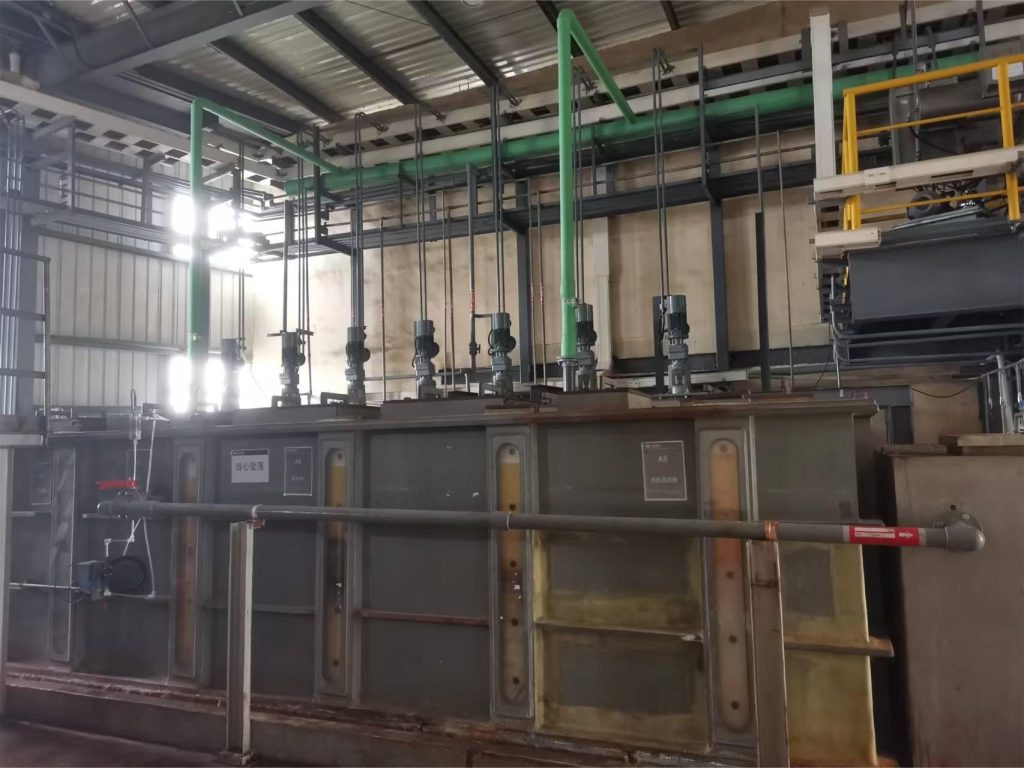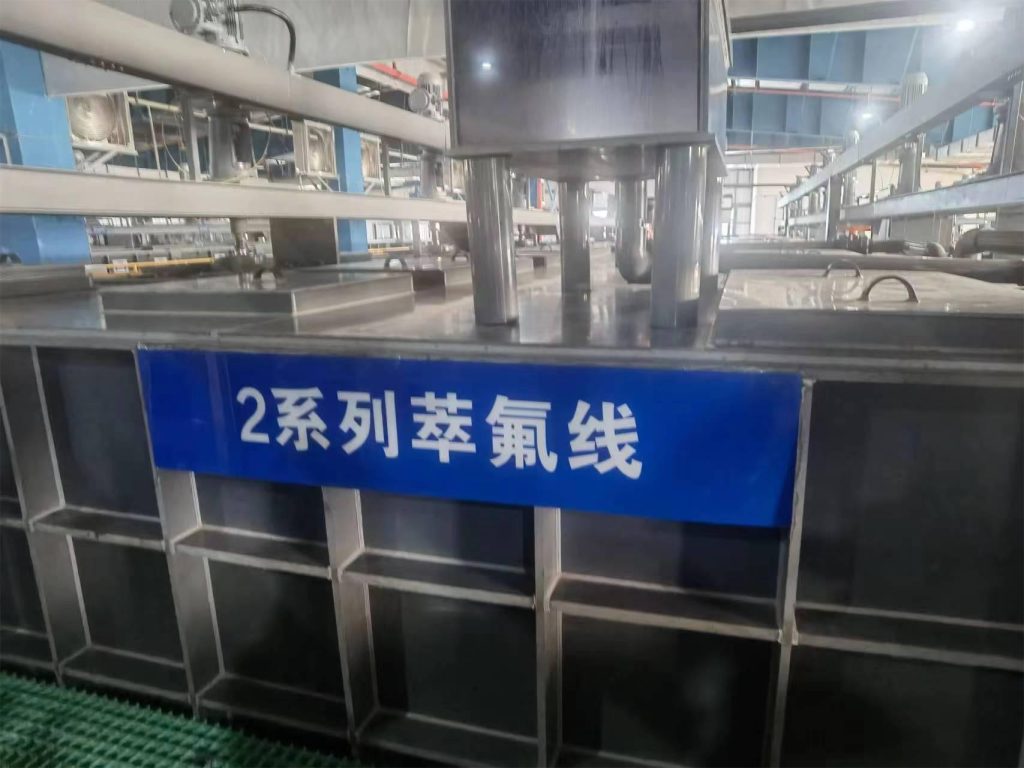Table of Contents
ToggleCore Steps of Hydrometallurgy
Leaching
The first step in hydrometallurgy is leaching, which involves breaking down the battery and dissolving the metals with chemicals. The most common chemicals used for this process are sulfuric acid and sodium hydroxide, which are effective at dissolving precious metals such as lithium, cobalt, and nickel. For example, cathode materials in lithium-ion batteries can be effectively leached with 2M sulfuric acid to recover lithium.
Solution Purification
After leaching, the solution that is produced contains not only the desired metals but also impurities. In order to purify the solution, techniques such as solvent extraction and ion exchange among others are used. In solvent extraction, there are specific organic solvents that have the ability to selectively bind to and thereafter extract the metal ions. Nickel-cobalt battery purification uses HT059 nickel-cobalt extractor to enable recovery of nickel and cobalt from spent batteries to over 98%, and this results in improved yields and profitability.
Metal Recovery
Metal recovery is the last stage, where purified metals are extracted from the solution. The most common methods are electrolysis or precipitation. In the former, the electric current is passed through a solution depositing the metal on electrodes. In the context of lithium recovery, electrolysis allows to achieve the recovery of 90%-95% making the metal pure enough to produce new batteries.
Here we mainly introduce the core steps of battery hydrometallurgy, please refer to the above steps and videos. After a general understanding, it is found that the effect of hydrometallurgy will vary depending on the selection of extractants, methods, equipment and other factors. In order to make hydrometallurgy better achieve the goal of sustainable battery recycling, we will think about how to improve the technology of hydrometallurgy from the perspective of more environmentally friendly recycling and high efficiency and high recycling.
Environmental Recycling Improvements
Non-toxic Extractants
Hydrometal Tech pays close attention to the development and production of environmentally friendly extractants that are non-toxic and are biodegradable. For instance, the extractant HT040 calcium can separate calcium from a high-concentration solution of manganese sulfate. The content of calcium in the remaining liquid after application of the extractant is less than 10 ppm. The extractant uses only sulfuric acid and liquid caustic soda, which is also relatively environmentally friendly. The use of this extractant considerably reduces the risk of pollution of the soil and water.
Waste Minimization
To minimize waste, Hydrometal Tech employs several strategies, including closed-loop systems and recycling of process water. Closed-loop systems ensure that any waste generated is treated and reused within the process, significantly reducing the overall waste footprint. Additionally, solid residues from the process are often treated and repurposed, further minimizing waste generation.
High Efficiency and High Recycling Improvements
Equipment Improvements
The extraction process is optimized using the advanced technology of mixer-clarifier system by Hydrometal Tech. In the first place, the leaching agents are mixed with battery materials using the mixer part of the system. Efficient mixing allows the intended metals to dissolve at a higher rate. The second part of the system, the clarifier, is used to separate the solid phase from the liquid phase. Otherwise, the solution is not clear and the liquid is still full of battery materials. Therefore, the separation is conducted in such a way to ensure that the metals can be recovered. Thus, because both of these processes are combined, the hydraulic system is more efficient. In conclusion, the above system is especially necessary because it allows working with a significant amount of material and avoid waste while guaranteeing that the recovery rate is optimal.
Process Optimization
Process optimization pertains to the arrangement of such parameters as temperature, pH, and the concentration of the leaching medium toward achieving the best results. For instance, having retained the temperature of 60°C and the pH of 2 during the extraction of lithium with the help of the leaching process, one is sure to witness a significant rise in the proportion of the mineral extraction. Therefore, constantly tracking and modifying the identified parameters allows for the maintenance of the optimal outcome of the hydrometallurgical process. Notably, the employed approach allows not only for maximizing material extraction but also for conserving resources and reducing the amount of waste.





